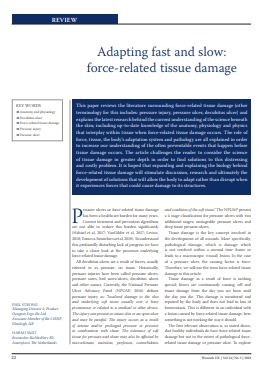This paper reviews the literature surrounding force-related tissue damage (other terminology for this includes: pressure injury, pressure ulcer, decubitus ulcer) and explains the latest research behind the current understanding of the science beneath the skin; including up-to-date knowledge of the anatomy, physiology and physics that interplay within tissue when force-related tissue damage occurs. The role of force, tissue, the body’s adaptation system and pathology are all explained in order to increase our understanding of the often preventable events that happen before tissue damage occurs. The article challenges the reader to consider the science of tissue damage in greater depth in order to find solutions to this distressing and costly problem. It is hoped that expanding and explaining the biology behind force-related tissue damage will stimulate discussion, research and ultimately the development of solutions that will allow the body to adapt rather than disrupt when it experiences forces that could cause damage to its structures.





